#Indian aurochs
Explore tagged Tumblr posts
Note
1, 3, 9, 20, 25, 27, 28, 39, 45, 47 SORRY THIS IS SO MANY LOLL
o my goodness ok im putting a cut here for everyone's sanity cause all these questions got me excited
Do you have a favorite place near you to “touch grass”?
theres a little woodsy park near my house just within easy walking distance which is easy to get into regardless of time of day or night and has an incredible hill where you can sit under an oak tree in the tall grass and watch the sun or the moon come up or set depending on time of day and year and i love love love it one of the only good things about my town i go up there for my Rituals And Things gkjhsf
3. If you could see any extinct species in the wild, what would it be?
im a sucker for megafauna id love to see an irish elk or an aurochs or a woolly mammoth that would be so so cool
9. Do you have a favorite nature photo you’ve ever taken?
here's some of the best photos ive ever taken in my life, and then some pictures from the hike back to the cabin when we realized the sun was setting sooner than we thought it would and it was about to get WAY too cold for how we were dressed
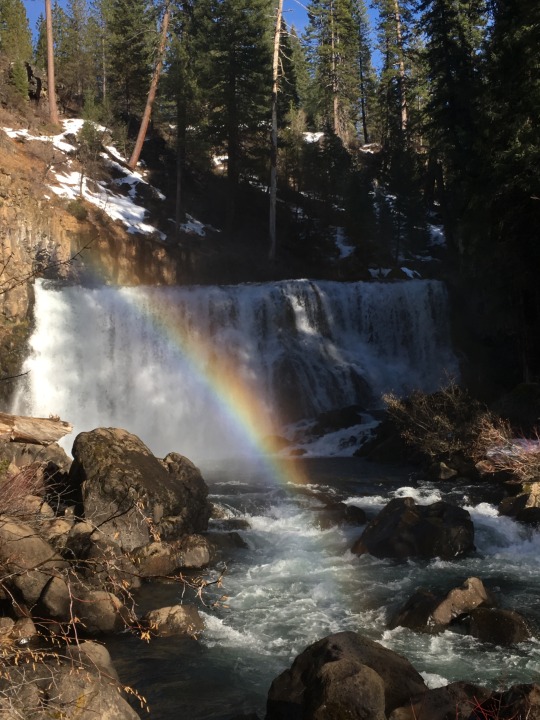
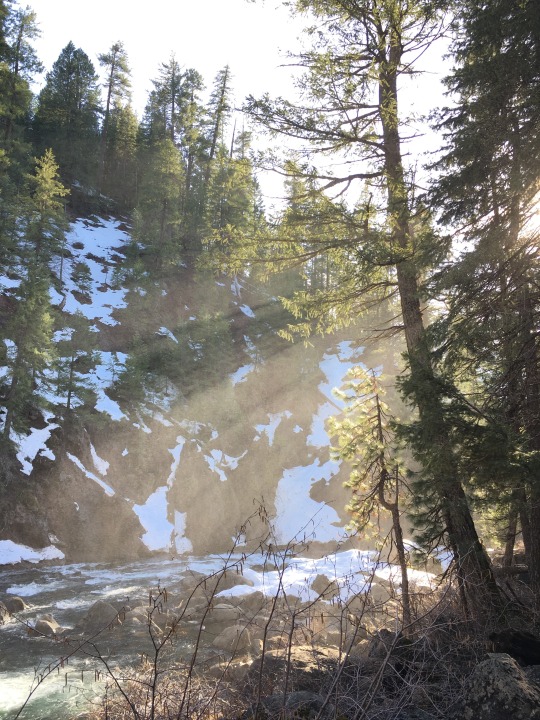
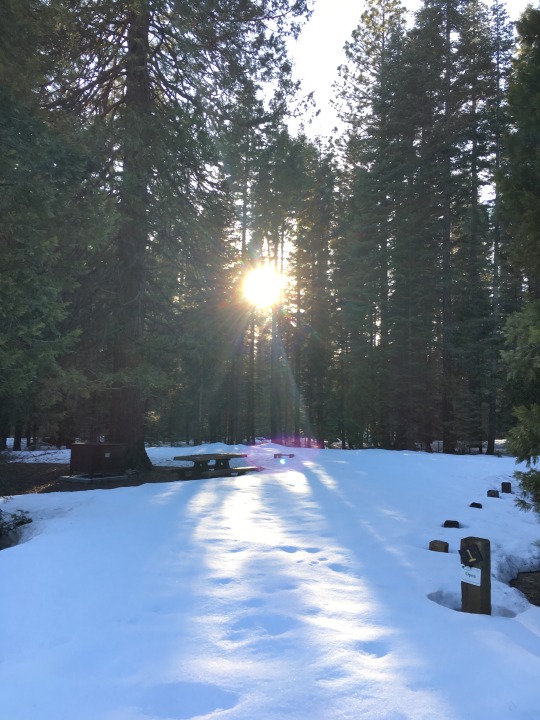

20. What’s your favorite poem or song lyric about nature?
definitely a gerard manley hopkins!!! he's my fave poet ever and half his work is about nature. i'm torn between two, tho: i think my favorite of all time, really my favorite poem entirely, is the windhover (ive been trying to copy and paste it here without ruining the formatting but it is not working alas so you must google it sorry), but the last stanza of another of my favorites of his poems, inversnaid, is also just. fucking killer
What would the world be, once bereft Of wet and of wildness? Let them be left, O let them be left, wildness and wet; Long live the weeds and the wilderness yet.
25. What’s your favorite plant to grow yourself?
i unfortunately live in a terrible spot to grow stuff, the yard of my family's little house is like. straight dry clay and entirely shady, so my thumb has never gotten even the barest hint of green to it. one day id like to grow wheat or corn or some such tho
27. What’s your favorite outdoor activity?
honestly????? i love to just Sit And Observe. i used to love love love swimming in creeks and lakes and things, but obv i havent swum in anything for a very long time. hopefully i will again one dayy im also a big big fan of a fire for singing around. and to be honest shakespeare doesnt feel right unless its performed somewhere outdoors and beautiful now
28. What’s your favorite local animal you see all the time but still love?
ALL OF THEMMMMMM we get raccoons and possums and squirrels and mule deer and black tailed deer and crows and ravens and pigeons and rats and mice and apparently frogs i learned recently and newts and theyre all my best friends and i get so excited when i see them
39. What ecosystem do you consider your “home” ecosystem?
absolutely all american pacific northwest shit i love a temperate rainforest with redwoods and doug firs and such and then the deciduous layer underneath all ferns and moss and little creeks and then the harsh cliffs down to the beach all cold and foggy and windy. that's where i Belong easy peasy. i do also associate the more aggressively californian Beige Grassy Hills With Lonely Scrappy Little Coast Live Oaks or Valley Oaks On Top type biome with home and growing up, but its always been a little too harsh and dry and sunny for me here.
45. What is your favorite wildflower?
o god thats hard i love wildflowers. im a sucker for daisies, obv, and i love forget-me-nots and california poppies and indian paintbrush and columbine and and and
47. What is your favorite species of tree?
o no thats hard too!!!!! ummm probably oak trees, especially white oaks like the valley oak or the oregon white oak, especially the really big old wise looking ones, but i also adore sequoioideae and other conifers, unsurprisingly, and rowans and apple trees among others hold personal spiritual significance, and theres this specific kind of maple or sweetgum idk what it is but they grew outside the theatre i grew up in so they always make me nostalgic. OH and i LOVE the smell of california bay laurel thats the Good Summertime Smell for me
7 notes
·
View notes
Text
Unicorn Origins
The interesting synthesis of natural observation, history, and imagination that spans ages and many civilizations is the foundation of unicorn stories. One of the most lasting mythological creatures in human history is the unicorn, usually portrayed as a horse-like creature with a single, spiraling horn on its forehead.
The first records of unicorn-like beings date back to the prehistoric era. Around 5,000 years ago, seals and tablets found in Mesopotamia showed animals with a single horn; nevertheless, it's possible that these images were artistically exaggerated depictions of aurochs or other actual species.

The Greeks and Romans wrote some of the earliest and most comprehensive stories of unicorns. About 400 BCE, the Greek physician and historian Ctesias wrote in his work Indica about an animal with one horn. It was larger than a horse and had a single horn on its forehead, according to his description of the wild Indian ass. The Indian rhinoceros may have influenced this story, which was likely based on tales from travelers.
Unicorns were also recorded by the Roman naturalist Pliny the Elder in his Natural History (77–79 CE). Despite the fact that many of his accounts were second-hand and relied on traveler stories rather than firsthand observation, he depicted them as vicious creatures with a single black horn.
The unicorn gained popularity as a graceful and pure emblem in religious and moral parables throughout Europe during the Middle Ages. A description of the unicorn was found in the 2nd-century Greek bestiary Physiologus, a work that had a significant impact on medieval European philosophy. During this time, tapestries, manuscripts, and other artwork frequently included unicorns.
The Bible further cemented the unicorn concept in Western culture. The King James Version rendered the Hebrew term "re'em," which appears multiple times in the Bible, as "unicorn," despite its likely meaning of a wild cow.

Many academics speculate that the unicorn myth may have originated from misinterpreted sightings of actual animals by distant cultures. One such animal was the narwhal, a whale with a long, spiral tusk. Medieval Europe frequently marketed narwhal tusks as unicorn horns due to their perceived magical qualities. In a similar vein, the belief may have originated from the single horn of the Indian rhinoceros.
The tale of the unicorn endures in contemporary culture, frequently signifying uniqueness, beauty, and magical abilities. Books, movies, and even promotional images for various goods feature it. Even though we now know that unicorns don't exist, the tale nonetheless holds a special place in people's hearts around the globe.
The tale of the unicorn is an intricate fabric, stitched together from natural history, ancient writings, and cultural iconography. The unicorn has been a potent symbol of mystery and surprise throughout history, appearing in everything from medieval European folklore to the ancient Greek and Mesopotamian civilizations to contemporary popular culture.
Larger essay: Unicorn Origins in Classic Texts
0 notes
Text
here are some of my favourite creatures:

(art by Heinrich Harder)
This is a glyptodon and I can't believe this isn't the type species for the ice age. look at it. It's a BIG ORB. It's the platonic ideal of an oval brought to life. I want to slap its giant bony scutes.

(image by Jochen Ackermann)
These are the ancestors of cows. (the one pictured is an Indian Auroch, which is the ancestor of zebu cattle and not the more common species of cows) Honestly, I look at restorations of them and I'm like... how the hell did they get domesticated. These are Beafts. If I was alive during the ice age I would absolutely see them as divine. They look so regal and imposing and we turned them into cows. Cows are pretty too but they're cute. I would want to pet one. If I saw an auroch in the wild I would just leave. Seeing one in the flesh is like seeing a grizzly bear in the flesh. I do NOT want to tangle with one. They would stomp me to death with their hooves and feel no remorse.

(art by Dmitry Bogdanov)
Don't they look cute! Giant tapirs look pretty similar to modern tapirs.
They go up to your shoulders.
Idk if that makes them scarier or cuter. I appreciate that giant tapirs are like supersize versions of their modern relatives (which happens a lot with ice age creatures, animals get bigger when it's colder). Afaik they haven't discovered any fossilized skin or fur so we don't actually know their coloration? They could have patterned fur like some modern tapirs.

(art by serchio25)
This is homotherium, one of the many species of sabre-toothed cats that were alive during the ice age. It wasn't just smilodon! There's like fifty other species of extinct sabre-toothed cats in the feline subfamily Machairodontinae, which unfortunately have all died out. They aren't related to any species of living feline today; they had their heyday around 16 million-11 thousand years ago and then gave the stage to modern cats.
Homotherium are around the size of a lion and there's a theory that they're specialized to hunt juvenile mammoths. They also hunt in packs, and dismember their prey before carrying it away to a safe place to eat. All of this info comes from one fossil site where they found like 400 skeletons of dismembered mammoths and some homotherium fossils, with butcher marks on the fossils matching the teeth of homotherium. You can't see the sabre teeth in the reconstruction above and that's because its teeth are tucked into its lips. Some scientists think smilodon's teeth also look like that instead of hanging out in the open, idk if there's a consensus yet. I don't actually have a favourite species of sabre-toothed cat, I love them all, but if I don't restrain myself this list would just be cats.

(art by JA Chirinos)
GIANT HECKING BIRD. These only died out around 1000 years ago. Vorombe Titan (not pictured) (I believe the image is Aepyornis titan) is said to have been the biggest bird in the WORLD. They're all like 3m tall and they're not closely related to living giant birds like the ostritch or cassowary but they are related to the kiwi.

(art by Pavel Riha)
Call me basic but I love these stupid deer. Yes. This is the Irish Elk. The Big Deer. Megalocerus Giganteus. Look at their stupid impractical antlers. I love them. Speaking of their antlers I have to clear up a misconception I hear repeated all the time - they did NOT die out because their antlers grew too big too fast. During the late ice age their antlers actually shrunk. What probably led to their extinction was a warming climate that replaced their preferred biome of open plains with Europe's famous forests. They were a victim of climate change, just like mammoths and dire wolves and every other species on this list. They don't deserve this slander! Their body was perfect for the environment they were in and when that environment changed they, unfortunately, couldn't change fast enough to match it.

(model by Emőke Dénes at the Natural History Museum of London)
I miss her 😭 This is Steller's sea cow and it was hunted to extinction 27 years after its discovery by Europeans in 1741. Even without overhunting, though, they probably would've gone extinct - they used to be everywhere but environmental factors pushed them further and further south until their population was so fragmented and bottlenecked that they had no hope of recovery. Sightings are reported into the modern day, but unfortunately I think they're gone ):

(art by Robert Bruce Horsfall)
GIANT GROUND SLOTHS. MY BLORBOS. Okay the evolution of the sloth actually drives me insane because they were one of the most successful groups of mammals and they made it into North America when South America was still an island AND they didn't all die out like a lot of South American species who tried to make it to North America. They're good swimmers and adept diggers and early humans used the giant burrows they dug with their giant claws for shelter. The biggest giant ground sloths were the size of elephants. A species of them might've been fully aquatic. The big sloths grew so big that no predators could eat it and for millions of years they just ambled around eating leaves until humans came onto the scene and hunted them to extinction. Usually with extinct prehistoric animals, the idea that humans were the sole reason they went extinct is wrong or at least not that simple (if humans did have an impact on their population it's almost always coupled with climate change. I would like to remind you that before like 1500 AD the entire human population over the entire world was less than 1 billion and in 0 AD it was like 180 million) but with sloths most scientists agree that humans played a large part in them going extinct.
And now the two living species of sloths are practically identical but they're not closely related to each other at all, the fact that they live in the same habitat and eat the same food and look the same and have the exact same adaptations is a result of convergent evolution. They move so slow and have so few muscles that they can't shiver to warm themselves up, but that's okay because their body temperature can fluctuate from 35 degrees celsius down to 20 degrees celsius without killing them. That's an insane range for a mammal. And while poaching IS a threat it's not as much of a threat as you'd think because if you shoot them and they die they'll just stay in the tree because their long curved claws lock together and poachers have no way of retrieving them so they just don't bother. They have to come down from their tree once a week to poop and scientists spent years trying to figure out why, what reasons did they have to evolve this, until one guy was like maybe they just... kept this from their ground-dwelling ancestors because they had no reasons to evolve it away. They're good swimmers even though they spend their whole lives in trees. Their muscles are so weak they literally can't hold them up if they fall to the ground. The two-toed sloth's ancestors are the giant ground sloths and now they are like this and the only reasons these sloths survived into the modern day is because humans can't climb into the trees and eat them. And I'm going to make myself stop here because this list is long enough and I'm hungry and I've been writing this since I got out of bed and I want breakfast.
I miss her (Pleistocene megafauna)
9 notes
·
View notes
Text
Cheetahs are back, but what all animal species are extinct in India?
Cheetahs are back, but what all animal species are extinct in India?
Animal species extinct in India: Today, 17th September 2022, eight Namibian Cheetahs are being translocated to Kuno National park. Hence, Cheetahs are coming back to India land almost 70 years after their extinction. This is the first step in the much ambitious “Project Cheetah”. According to news agency PTI, there is a possibility that next month India will have another batch of 12 South…

View On WordPress
#A Miracle#cheetah project#Extinct animals#extinct animals India#Himalayan Quail#Indian aurochs#Indian Javan Rhinoceros#Northern Sumatran rhinoceros#Pink-headed duck
1 note
·
View note
Note
cursed biology cows? 🐄
all domestic cattle are all descended from the Aurochs, an enormous ice-age megafauna bovid that ranged from Europe to Asia to North Africa!
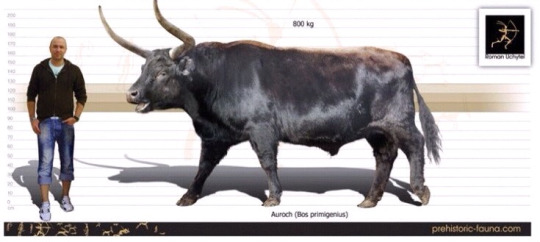
Aurochs were actually domesticated at LEAST twice in different areas more than 10,000 years ago, which is why Indian Zebu-type cattle look so different from European cattle!
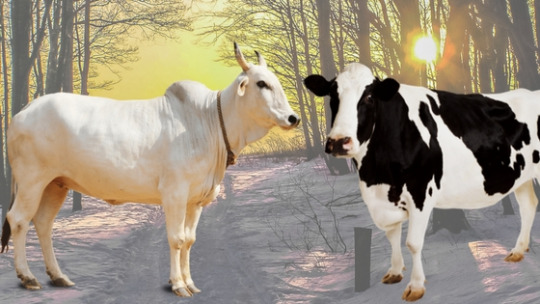
they share a common ancestor but different roots.
more importantly though, it means that at least two separate groups of neolithic humans looked at a six-foot-tall jet black bovine rage machine and thought “gonna make friends with that”, and then they did it. those wild sons of bitches, they did it.
39K notes
·
View notes
Text
The Wild Kine of Araw
Genus : bovine
Name meaning : wild ox of Oromë
History : Legends claimed they were descendants from Oromë's personal herd of cattle, so they were named Kine of Araw (Araw being the sindarin form of Oromë). They were the quarry of Vorondil the hunter, an ancestor of the ruling stewards of Gondor, and it was he who cut the horn from a kine and made the Great horn out of it, that would later be used by Boromir before his death.
Description : They're barely described at all, save for a brief mention of 'wild white kine' in the appendices of the Lord of the rings, which seems to hint that eventually the Kine of Araw in middle Earth became a sub-species found only "near the Sea of Rhûn" as opposed to being pure Kine of Araw. Which is also supported by the consistent use of the phrase 'wild kine/ox' when describing the history of Boromir's horn. They're also said to be hardier and wilder than any other species of ox in middle Earth.
Influences : In an unpublished manuscript in the Bodleian library, tolkien likens the wild kine to aurochs, an extinct wild ox species that domestic cattle stem from.
Similar species to use as a reference :
Aurochs
"These are a little below the elephant in size, and of the appearance, color, and shape of a bull. Their strength and speed are extraordinary; they spare neither man nor wild beast which they have espied. These the Germans take with much pains in pits and kill them. The young men harden themselves with this exercise and practice themselves in this sort of hunting, and those who have slain the greatest number of them, having produced the horns in public, to serve as evidence, receive great praise." - Julius Caesar describing aurochs in his History of the Gallic War.
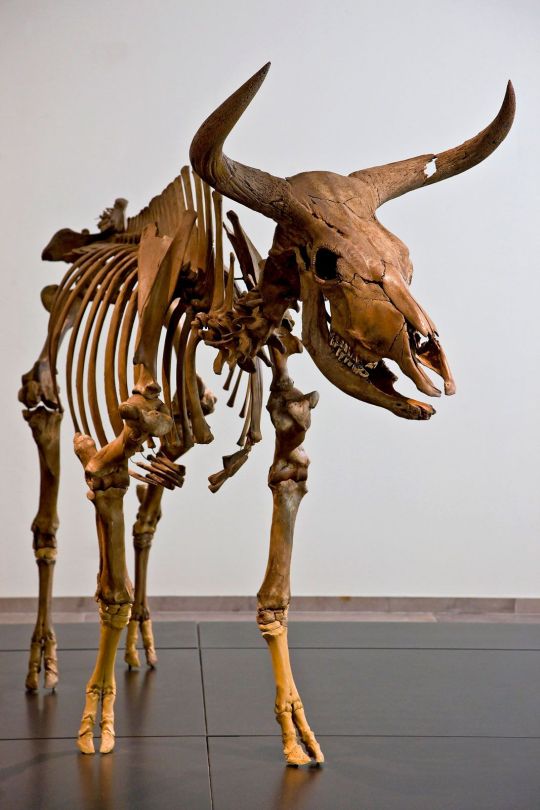

Since aurochs had been extinct at the time tolkien lived and so little is mentioned about the wild Kine of Araw, its impossible to know how closely tolkien imagined the two species to look, however there are a number of breeds that still exist today that have similar colouring, confirmation and behaviour to both aurochs and wild kine of Araw.
Pajuna cattle
The closest living relative to aurochs in the world, certain lineages are thought to share similar colours and markings with the aurochs and they share the same forward facing horns. They're extremely hardy cattle that have adapted to harsh living conditions.


Heck cattle
Bred by Heinz and Lutz Heck to be a modern auroch in the 1920s - 1930s, they naturally share alot of traits with the aurochs, they are one of the largest breeds in the world and are extremely aggressive, but they are still smaller than an actual auroch


Indian Gaur
One of the largest and most aggressive breeds of wild cattle, if left undisturbed they are more wary of humans but when in regular / semi-regular contact with humans they become aggressive. They've been known to charge without provocation, kill domestic cattle in fights and there's even been reports of them killing tigers.

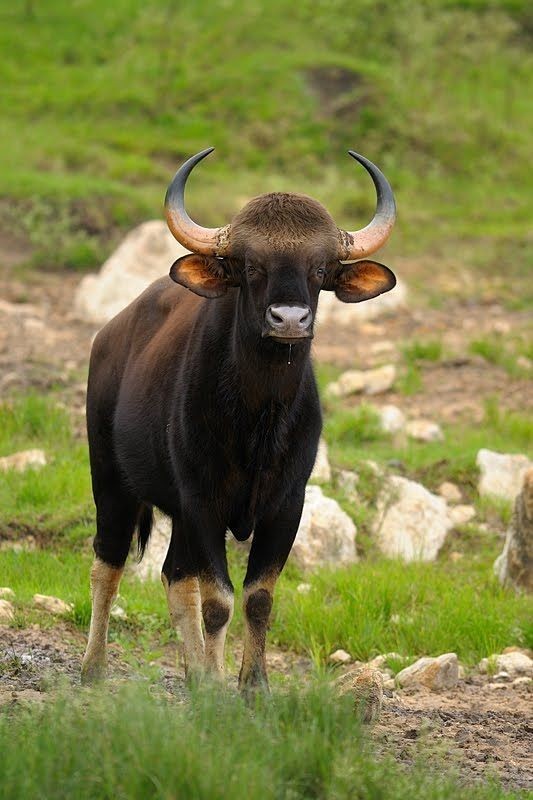
Chianina
The largest breed of cow in the world, and is also white which technically makes them closer to the canonical description of the wild kine of Araw than others mentioned. They are more docile than the others on this list, due to working closely with humans and being bred for farm work (pulling carts, ploughing etc)


This post (and maybe more like this in the future) was inspired by @outofangband 's amazing posts on the flora , fauna and general environments of Arda, please go check out their posts if you like this sort of thing.
#wild kine#kine of araw#tolkien#tolkien legendarium#the hobbit#hobbit#lotr#boromir#stewards of gondor#steward of gondor#Vorondil#vorondil the hunter#silmarillion#Boromir's horn#boromir son of denethor#wild white kine#oromë#araw#ecology of middle earth#world building#fauna of middle earth
21 notes
·
View notes
Text
bovine themed names
Abigar (Abigar cattle)
Albion (Blue Albion, british breed of cattle)
Ankole (Ankole cattle)
anteng,javani,vanicu,tembad (Banteng/Bos javanicus/tembadau, cattle from southeast asia.)
antiqu (Bison antiquus, ancient bison from North America)
Asteri (crete name for minotaur)
athaba (American wood bison, Bison bison athabascae)
Auroch (Aurochs, a primitive cow)
Boskap, odbrok (Swedish Red Pied/Rödbrokig Svensk Boskap, a swedish cow)
Braunv, unvieh (Braunvieh, brown cattle from germany)
Bubalu (Bubalus arnee, wild water buffalo)
Buchis (Buchis/bakh/bakha ancient egypt sacred bull)
Bucran (bucranium, depiction of the skulls of ox in classical architecture)
Bugoni, bougon (bugonia/bougonia, ritual based on a cow carcass)
Camahu, mahuet (Camahueto, calf or bull with a small horn on its forehead from Chilote mythology)
Charol, rolais (Charolais cattle from france)
Damona (Damona, cow goddess worshipped in Gaul)
daquit, quitai (Blonde d'Aquitaine cattle from france)
eliobo (Cattle of Helios/ Ἠελίοιο βόες, Ēelíoio bóes, cattle on the island of Thrinacia)
Enkidu (wildman figure in Mesopotamian mythology)
gaurus (gaur/Bos gaurus, Indian bison)
Gertru (Santa Gertrudis cattle)
geushu (geush urva, "the spirit of the cow")
Girola, olando (Girolando cattle)
gudali (The Bison-beast, a hero slain in sumerian religion)
Haddad (Adad/Haddad/Hadad/iskur storm and rain god Mesopotamian religon with the symbolic animal of a bull)
Hadhay (Hadhayans, Zoroastrian mythological bovine)
Hamiti (Hamitic Longhorn, the origin species of highland cows)
hanaiz,zumien (Bison hanaizumiensis, japanese bison)
Hapian (Apis/hapis/Hapi-ankh, bull worshipped in ancient egypt)
Hathor (Hathor, egyptian cow goddess)
hazaha (golden calf/ēggel hazāhāv, idol made by the israelites)
heifer,adumma (Red heifer/para adumma, virgin cow made for sacrifice)
Herefo (Hereford cattle, british breed of beef cattle)
Hostei, Friesi (Holstein Friesian cattle)
ikaner (Afrikaner cattle)
Ilawar, awarra (Illawarra cattle from Australia)
Jaktor (the name of the forest the last auroch's died in)
Jallon, Malink, nadama (N'Dama, Boenca or Boyenca (Guinea-Bissau), Fouta Jallon, Djallonké or Djallonké cattle, Fouta Longhorn, Fouta Malinke, Futa, Malinke, Mandingo (Liberia), and N'Dama Petite)
Kamadh,Surabh (Kamadhenu/Surabhi bovine goddes in hinduism)
Kankre (Kankrej cattle)
laeosi,nensis (bison palaeosinensis, early bison)
Lamasu (lama/lamma/lamassu/shedu, Assyruian protective diety)
leborn, huidre (Lebor na hUidre [ˈl͈ʲevor nˠə huiðʲrʲə] or the Book of the Dun Cow)
lekijn (boelekijn/bullock, a young bull)
Limous, mousin (Limousin cattle from france)
Mehete (Mehet-Weret, "Celestial Cow" or "Cow Goddess" in ancient egypt)
Mnevis (ancient Egyptian bull god)
Moloch (Moloch/molech/molek, bull-headed idol appearing in the hebrew bible)
Nandiu (nandi, gate guardian diety in the hindu religion)
niutou (ox-head, one of two guardians of the underworld in Chinese mythology)
ociden (Bison occidentalis, extinct species of bison from North America)
oumbla (Auðumbla, primeval cow from norse mythology)
ovidae (Bovidae, the family of bovines)
pongif, cephal,halopa (Bovine spongiform encephalopathy, mad cow disease)
priscu (B.priscus, steppe bison)
rakens (Drakensberger cattle)
rangus (Brangus, cross between angus and brahman breeds)
rontal,mithun (gayal/Bos frontalis/mithun, indian domesticated bovine)
Sahiwa (Sahiwal cattle)
schoet,tensac (Pleistocene woodland bison, B. schoetensacki)
Senepo (Senepo cattle)
Taurin (Taurine cattle, domesticated species from europe)
Taurob (Taurobolium, practices involving the sacrifice of a bull)
tifron (Bison latifrons, giant/long horned bison)
Trigar,garanu (Tarvos Trigaranus, divine fingure in a roman monument)
uzerat, Guzera (Guzerá cattle)
Vechur (Vechur Cow)
wisent (European wood bison)
zerwon (Polish Red, Polska czerwona)
zubron (a hybrid of domestic cattle and bison)
20 notes
·
View notes
Text

This fine sir is called a zebu cow or bos Taurus indicus. They are a descendant the extinct Indian aurochs. Zebu cows are considered one of the first cows to be domesticated and they can be used for meat, milk, and as draft animals. They can handle subtropical climates better than most European cow breeds and are mostly found in India and Brazil
I just like them because they look funky though :)
6 notes
·
View notes
Photo

Here is a LONG list of all the Kemono Friends character sprites. From left to right. Kaban, Serval, Lucky Beast, Racoon, Fennec , Hippopotamus, Small-clawed Otter, Jaguar, Crested Ibis, Alpaca Suri, Sand Cat, Tsuchinoko, American Beaver, Black-Tailed Prairie Dog, Lion, Arabian Oryx, Auroch, Japanese Black Bear, Moose, Giant Armadillo, White Rhinoceros, African Porcupine, Panther Chameleon, Shoebill , Northern White-Faced Owl, Eurasian Eagle-Owl, Margay, Princess/Royal Penguin, Iwabi/Rocker/Rockhopper Penguin, Gen/Gentoo Penguin, Hululu/Humboldt Penguin, Emperor/Emperor Penguin, Ezo Red Fox
Silver Fox, Campo Flicker, Reticulated Giraffe, Gray Wolf, Brown Bear, Golden Snub-nosed Monkey, African Wild Dog, Ocelot, Malayan Tapir, Fossa, Indian Elephant, Axis Deer, King Cobra, Southern Tamandua, Peafowl, Tasmanian Devil, Frilled Lizard, Okapi, Scarlet Ibis, Cerulean, Mirai, Mirai (Hologram), Serval (possible Hologram), Black Cerulean, Crunchyroll-hime, Zebra, Thomson’s Gazelle , Capybara ,Short-beaked Common Dolphin, Aardwolf, Brown Thoroughbred, White Thoroughbred, Black Thoroughbred, Bearded Seal, Puma, Giant Panda, Australian Devil, Silka Deer, Black Jaguar, Black Leopard, Rock Hyrax, Blue Whale, Greater Flamingo, Raccoon Dog, Sheep, Smilodon, White Tiger, Woolly Mammoth, Nana, African Bush Elephant, Black Rhinoceros, Caracal, Koala, Quagga, Kako, Queen Cerulean, Cerval, Keoro, Giroro, Tamama, Dororo, Kururu, Godzilla, Tachikoma Type-A , Tachikoma Type-B , Tachikoma Type-C , HAW-206 , Uchikoma , Logikoma, Byakko, Genbu, Seiryu, Suzaku, Japari Bus, Ink Kaban, Ink Serval, Ink Lucky Beast, Grape-kun
21 notes
·
View notes
Text

//Okay this has nothing to do with this blog but I’m reading the ASOIAF books and obviously my favourite part is all the animal symbolism/imagery, so I’m reading it visualising the Starks and Lannisters as goofy two-legged Disney’s Robin Hood-style wolves and lions but then I was like “wait...what would everyone ELSE be,”
so here’s an exhaustive list that really no one asked for:
Arryns: Peregrine Falcons
Baratheons: Red Deer
Boltons: Chimpanzees
Cleganes: Great Danes
Dothraki: Zebra
Florents: Red Foxes
Freys: Rats
Greyjoys: Bald Eagles
Martells: Cobras
Lannisters: Lions
-Kevan/Lancel: Leopards
Mormonts: Black Bears
Paynes: Gorillas
Reeds: Crocodiles
Reynes: Tigers
Starks: Wolves
Targaryens: Unicorns
Tarlys: Pigs
Tullys: River Otters
Tyrells: Sheep
Unsullied: Wildebeest
Alliser Thorne: Wolverine
Barristan Selmy: European Badger
Brienne of Tarth: Indian Rhinoceros
Bronn: Spotted Hyena
Davos Seaworth: Sea Otter
Gendry: Bull
Grenn: Aurochs
High Sparrow: House Sparrow
Hodor: Asiatic Elephant
Janos Slynt: Warthog
Jaqen H’ghar: Jaguar
Littlefinger: Mockingbird
Maester Luwin: Eagle-Owl
Maester Pycelle: Snowy Owl
Mance Rayder: Mountain Lion
Melisandre: Secretary Bird
Meryn Trant: Cape Buffalo
Missandei: Gazelle
Osha: Moose
Qyburn: Lapper-faced Vulture
Shae: Cheetah
Syrio Forel: Flamingo
Tormund: Grizzly Bear
Varys: Spider Monkey
Ygritte: Coyote
Yoren: Ibex
#ooc.#long post.#//I'll delete this when I wake up because this is longer than anyone needs#//and I say 'when I wake up' because its 7am and I haven't slept#//but I'm...obsessed with it. Especially rhino Brienne. lion Twyin. gorilla Podrick. and spider monkey Varys#//a lot of characters I missed out but there's...so many characters#//I would totally play Brienne or Twyin though if I could get into playing humans a bit more and had a place to put them#//I have that super nerdy (but pretty baller tbh) Lannister song stuck in my head and I'm just picturing a lion/tiger war#//It feels a bit carnivore-heavy but the smallfolk and soldiers and stuff would mostly be herbivores and domestic dogs and the like#//Shae is only a cheetah because she um...cheats#//and Jaqen H'ghar is a jaguar because it...rhymes
3 notes
·
View notes
Photo
Well, maybe. If unicorns were inspired by rhinos, it would have been the Indian rhino, since the unicorn myth originated in India. But it tends to have short, stubby horns due to wear, and as you may notice the horn is on the nose, not the forehead.
There’s now three other accepted theories- aurochs, gazelles/antelopes, and the Asian kirin/qilin. The auroch was a large cow that is the ancestor of modern domestic cattle. It has large horns and went extinct in the 1600s. This is the likely source of the biblical “re’em”, a muscular, stout beast with a single horn that is now often misinterpreted as a unicorn. If and aurochs or a gazelle or antelope was viewed from the side for a fleeting moment, the viewer could easily mistake it for having a single horn. And the kirin is a mythical beast in many East Asian folklores that is essentially a horned dragon horse. Tales of it would have trickled their way to Europe along trade routes. Even today it’s often associated with unicorns, hence the Kirin in Monster Hunter.
It is, of course, quite likely that all four things, rhinos, aurochs, gazelles, and stories about kirins, melded together to result in the unicorn. In fact in late dark ages/early medieval times unicorns could even be described as a sort of wild donkey, deer, or goat. It eventually would change to being a horse. So the myth has evolved quite a lot, suggesting much outside influence over millennia.
Also, in Ming dynasty China, the kirin was associated with giraffes.

60K notes
·
View notes
Photo

Un homme lave un de ses buffles. Tout le monde le sait, en Inde les vaches sont sacrées, il faut bien les traiter, mais... ce n'est pas le pas le cas pour les buffles. Eux, on peut les faire travailler, les frapper (j'ai pas dit que c’était obligatoire non plus) et même les manger, tout cela sans risquer de se faire lapider par les plus radicaux des hindous. L'Inde est d'ailleurs le premier exportateur mondial de viande de buffle (surtout vers les pays du Golfe). La différence ? Ces deux animaux sont de la même "famille" : les Bovinés (une sous-famille de la famille des Bovidés), mais la vache est dans la branche "Bos" (les vaches, bœufs, yaks, zébus et autres aurochs) alors que le buffle est dans la branche "Bubalus" (tous les buffles). Bref, ils sont cousins mais il y en a un qui a moins de chance que l'autre... On note au passage que les Indiens sont donc très fort en biologie et en classifications (mais ça on le savait déjà, ils essaient malheureusement de faire pareil avec les humains, même quand il n'y a pas de différences biologiques...).
********************************
A man washes one of his buffaloes. Everyone knows, in India cows are sacred, it must be treated well, but ... this is not the case for buffaloes. They can work, be hit (I did not say it was mandatory either) and even eat, this without risking being stoned by the most radical Hindus. India is the world's largest exporter of buffalo meat (especially to the Gulf countries). The difference ? These two animals are from the same "family": the Bovinis, but the cow is in the branch "Bos" (cows, oxen, yaks, zebus and other aurochs) while the buffalo is in the branch "Bubalus" (all buffaloes). So, they are cousins but there is one who is less fortunate than the other ... We note that the Indians have great knowledge in biology and classifications (but we already knew that, they try unfortunately to do the same with humans, even when there are no biological differences ...).
289 notes
·
View notes
Photo

The Neolithic Revolution, when humans transitioned from hunter gatherer to agricultural based society, saw an increased use of animal domestication. . The wild cattle aurochs (top and bottom) were one of the largest herbivores during this time, and they formed a central relationship with humans through domestication that ended recently in the 1600’s when it became a extinct. . The oldest auroch remains have been found on the Indian subcontinent and dated to 2 million years ago. . Aurochs’ impact on human culture was significant and lasting: they were portrayed in cave art painted by the Neanderthals (top) and their lineages most likely evolved into the zebu (in the Indus) and the taurine cattle (Eurasia). . Credit: Profsaxx/HHarder / public domain. . #agriculture #neolithic #aurochs #extinction #taurine #holocene #genetics #cavepaintings #neanderthals https://www.instagram.com/p/B_LPyVaDGuv/?igshid=1kmulpld9bo8r
0 notes
Note
Why do Indian cattle look the way they do? :>
indian cattle look different from european-descended cattle because they’re descended from an entirely separate population of Aurochs!

the hump and dewlap help make these cattle super heat-resistant, and likely served the same purpose in their wild ancestors! as a result, indian cattle can take heat and drought conditions that would almost immediately kill a wisconsin holstein, and run off mooing in amusement about it.
african cattle are similarly adapted- most of them are descended from yet a third population of wild aurochs and represent Wild Hellcow Domestication Event #3!

you can see how these cattle also kind of have the hump+dewlap combo and a similar head shape to the indian cattle- it’s the same heat adaptations inherited from their wild ancestors!
basically, both indian and african cattle arose from the two seperate times that humans living in hot climates looked at their local Death Bovines and said, “gods it is SO hot, get over here, I am going to drink you” and then did.
1K notes
·
View notes
Text
Environmental impacts of hunting
Around 1875, a stack of skulls of bison intended for the manufacture of fertilizers. Sometimes corpses were abandoned on the prairie, simply stripped of their fur. Hunting activity has historically characterized ecosystems and landscapes, especially when it has been accompanied by the use of fire, dogs or trained raptors, trapping and poisoning. If a species such as the saber-toothed tiger appears to have naturally disappeared, many species may have suddenly disappeared from hunting, long before agricultural and urban expansion, in the northern hemisphere, Australia and on a number of islands. Prehistoric archeology and palaeontology show that these extinctions began with the disappearance of large animals (including European mammoth, elephant, cave bear, cave lion, megaloceros, etc.). These extinctions coincided with the extension of Cro-Magnon manpower very skilful in the use of flint, saga thrusters, bow, and possibly trapping and poisoning techniques. In Western Europe, in the late Middle Ages, most large mammals (deer, deer, aurochs, bison, reindeer, etc.) were declining, except in the royal forests and remote areas. Even the churchmen could practice hunting as recalled by a parchment of the monk Abelard who forbade monks under his authority to hunt the bear for more than two days a week. A common banquet menu of Louis XIV could include 300 stuffed cubs [ref. necessary]. After the French Revolution, which democratized hunting, large hunted mammals and birds still regressed, disappearing from entire regions [ref. (or totally for the aurochs) and everywhere outside the zoos and then the ancient royal forests of Poland. In North America, the widespread use of guns very quickly led to the regression of species such as the bison of the grasslands and the total disappearance of the migratory pigeons which by flights of millions of birds could obscure the sky and hide the sun there scarcely two centuries ago. The systematic slaughter of the bison was more political than the hunters, with the avowed aim of starving the Indians. It was not until the 1960s and 1970s that, as a result of changes in regulations, the growing awareness of a growing proportion of the population as a result of hunting to artificial feeding, known as "agribation", which these populations have replenished, on impoverished genetic bases, and in the case of wild boar after crossing with pigs, but not without success quantitatively, sometimes to the point of causing considerable damage in the crops or in over-exploited forests, posing so-called silvocounete imbalances. Human populations in tropical and equatorial regions, except on islands, do not seem to have eradicated species by hunting, whereas disappearances and regressions have been very significant in the temperate zones of the northern hemisphere and in Australia. However, the apparent improvement of certain populations of huntable species raises the problem of their genetic and health quality when stocking from livestock has been carried out. At the end of the 20th century, in a number of countries, a trend was emerging in favor of ecologically responsible hunting, represented by ANCER (a very minority) in France. The use of heavy metals Another problem is the massive and even preferential use of toxic (lead) ammunition containing heavy metal primers. This lead is the cause of a serious and proven problem of avian lead poisoning despite a shift towards the substitution of lead cartridges for less toxic ammunition since the 1980s in some countries and for certain types of hunting. In several countries, hunting with lead cartridges is prohibited on all wetlands (ponds, rivers, marshes, coastlines ...); hunters are obliged in these areas to use cartridges of steel balls or alloys based on bismuth or tungsten. Lead, which is highly polluting, particularly for water bodies and the food chain (in France, cartridges are only forbidden in France since 2005 and only for a hunter pulling towards a wetland or a wetland, but tens of thousands of tons of lead beads are still present in soils and sediments, an avian poisoning factor);
1 note
·
View note
Text
Desi Cow Milk Vs Milk from Foreign Breeds (Jersey and HF Cow)
Image Source: Pexels
Most Indian dairies involved in commercial production of milk are known to produce processed milk from H.F and Jersey cows. However, these cows are originally a breed of Urus, a wild animal which is also known as Aurochs in Germany. It is because of its excellent quality and quantity of meat that the Europeans hunted this wild animal. Now, because hunting this animal was…
View On WordPress
0 notes